Peter M Atkinson
Spatial Gated Multi-Layer Perceptron for Land Use and Land Cover Mapping
Aug 09, 2023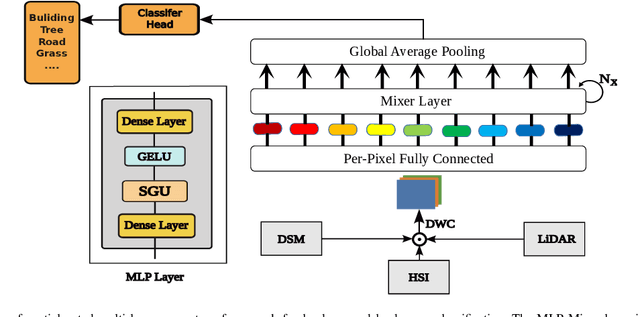


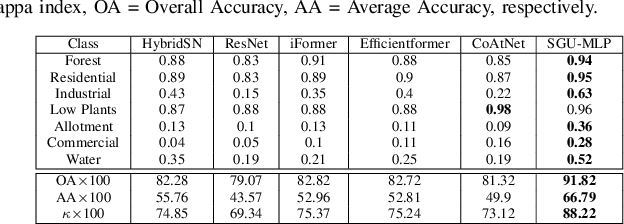
Abstract:Convolutional Neural Networks (CNNs) are models that are utilized extensively for the hierarchical extraction of features. Vision transformers (ViTs), through the use of a self-attention mechanism, have recently achieved superior modeling of global contextual information compared to CNNs. However, to realize their image classification strength, ViTs require substantial training datasets. Where the available training data are limited, current advanced multi-layer perceptrons (MLPs) can provide viable alternatives to both deep CNNs and ViTs. In this paper, we developed the SGU-MLP, a learning algorithm that effectively uses both MLPs and spatial gating units (SGUs) for precise land use land cover (LULC) mapping. Results illustrated the superiority of the developed SGU-MLP classification algorithm over several CNN and CNN-ViT-based models, including HybridSN, ResNet, iFormer, EfficientFormer and CoAtNet. The proposed SGU-MLP algorithm was tested through three experiments in Houston, USA, Berlin, Germany and Augsburg, Germany. The SGU-MLP classification model was found to consistently outperform the benchmark CNN and CNN-ViT-based algorithms. For example, for the Houston experiment, SGU-MLP significantly outperformed HybridSN, CoAtNet, Efficientformer, iFormer and ResNet by approximately 15%, 19%, 20%, 21%, and 25%, respectively, in terms of average accuracy. The code will be made publicly available at https://github.com/aj1365/SGUMLP
Two-Phase Object-Based Deep Learning for Multi-temporal SAR Image Change Detection
Jan 17, 2020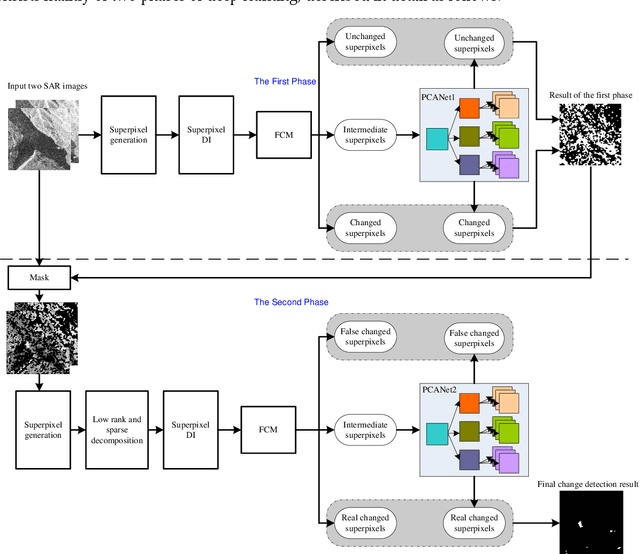

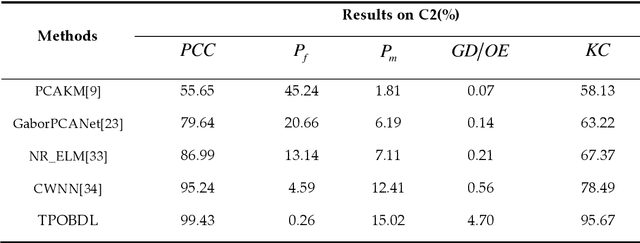
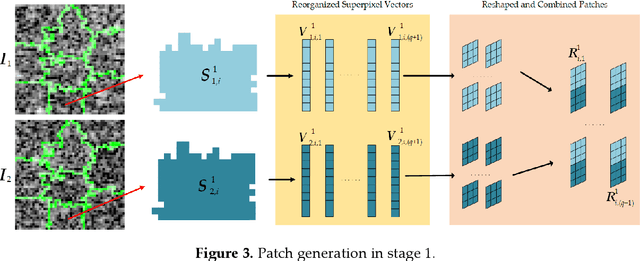
Abstract:Change detection is one of the fundamental applications of synthetic aperture radar (SAR) images. However, speckle noise presented in SAR images has a much negative effect on change detection. In this research, a novel two-phase object-based deep learning approach is proposed for multi-temporal SAR image change detection. Compared with traditional methods, the proposed approach brings two main innovations. One is to classify all pixels into three categories rather than two categories: unchanged pixels, changed pixels caused by strong speckle (false changes), and changed pixels formed by real terrain variation (real changes). The other is to group neighboring pixels into segmented into superpixel objects (from pixels) such as to exploit local spatial context. Two phases are designed in the methodology: 1) Generate objects based on the simple linear iterative clustering algorithm, and discriminate these objects into changed and unchanged classes using fuzzy c-means (FCM) clustering and a deep PCANet. The prediction of this Phase is the set of changed and unchanged superpixels. 2) Deep learning on the pixel sets over the changed superpixels only, obtained in the first phase, to discriminate real changes from false changes. SLIC is employed again to achieve new superpixels in the second phase. Low rank and sparse decomposition are applied to these new superpixels to suppress speckle noise significantly. A further clustering step is applied to these new superpixels via FCM. A new PCANet is then trained to classify two kinds of changed superpixels to achieve the final change maps. Numerical experiments demonstrate that, compared with benchmark methods, the proposed approach can distinguish real changes from false changes effectively with significantly reduced false alarm rates, and achieve up to 99.71% change detection accuracy using multi-temporal SAR imagery.
 Add to Chrome
Add to Chrome Add to Firefox
Add to Firefox Add to Edge
Add to Edge